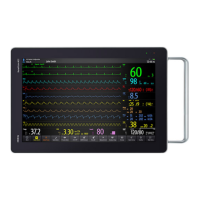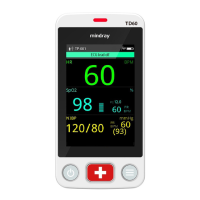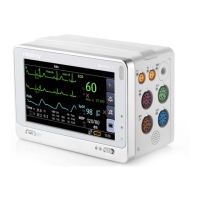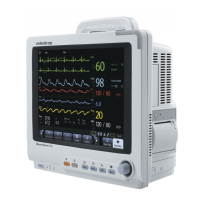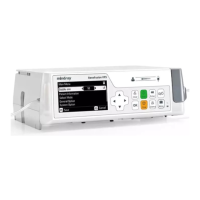BeneVision N17/BeneVision N15/BeneVision N12 Patient Monitor Service Manual 3-11
CAUTION
Calibrate the O
2
module, if it has been transported for long distance.
3.2 Power On Test
This test is to verify that the patient monitor can power up correctly. The test is passed if the patient
monitor starts up by following this procedure:
1. Connect the patient monitor to the AC mains. The AC mains LED and battery LED light up.
2. Press the power on/off switch to switch on the patient monitor. The system sounds a beep indicating
the self test on alarm sounds is passed. The alarm lamps light red, yellow and cyan respectively, and
then go off, indicating the self test on alarm sound is passed.
3. The patient monitor enters the main screen and start-up is finished.
3.3 Module Performance Tests
3.3.1 ECG Tests
ECG Performance Test
Tools required:
Medsim300B patient simulator or other equivalent simulator
1. Connect the patient simulator with the ECG module using an ECG cable.
2. Set the patient simulator as follows: ECG sinus rhythm, HR = 60 bpm with the amplitude as 1 mV.
3. Verify that the ECG waves are displayed correctly without noise and the displayed HR value is within
60±1 bpm.
4. Disconnect each of the leads in turn and observe the corresponding lead off message displayed on
the screen.
5. Set the output of the simulator to deliver a paced signal and set Paced to Yes on the monitor. Check
the pace pulse marks on the monitor screen.
ECG Verification
Tools required: vernier caliper
1. Select the ECG parameter window or waveform area →Filter→Diagnostic.
2. Select
Main Menu →Maintenance → enter the required password → Module..
3. Select Calibration. A square wave appears on the screen and the message "ECG Calibrating" is
displayed.
4. Compare the amplitude of the square wave with that of the scale. The difference should be with 5%.
5. After completing the calibration, select Stop Calibration.

